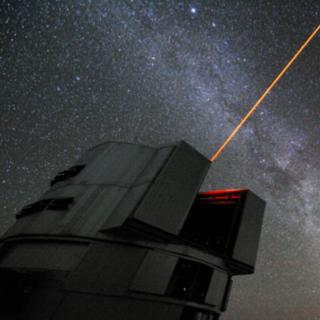Bibcode
Montes, Mireia; Trujillo, Ignacio; Infante-Sainz, Raúl; Monelli, Matteo; Borlaff, Alejandro S.
Referencia bibliográfica
The Astrophysical Journal
Fecha de publicación:
9
2021
Revista
Número de citas
28
Número de citas referidas
28
Descripción
Using ultra-deep imaging (μg = 30.4 mag arcsec-2; 3σ, 10″ × 10″), we probed the surroundings of the first galaxy "lacking" dark matter (DM) KKS2000[04] (NGC 1052-DF2). Signs of tidal stripping in this galaxy would explain its claimed low content of DM. However, we find no evidence of tidal tails. In fact, the galaxy remains undisturbed down to a radial distance of 80″. This radial distance triples previous spatial explorations of the stellar distribution of this galaxy. In addition, the distribution of its globular clusters (GCs) is not extended in relation to the bulk of the galaxy (the radius containing half of the GCs is 21″). We also found that the surface brightness radial profiles of this galaxy in the g and r bands decline exponentially from 35″ to 80″. Together with a constant ellipticity and position angle in the outer parts of the galaxy, this strongly suggests the presence of a low-inclination disk. This is consistent with the evidence of rotation found for this object. This finding implies that the dynamical mass of this galaxy is a factor of 2 higher than previously reported, which brings the DM content of this galaxy in line with galaxies of similar stellar mass.
Proyectos relacionados

Evolución Galáctica en el Grupo Local
La formación y evolución de galaxias es un problema fundamental en Astrofísica. Su estudio requiere “viajar atrás en el tiempo”, para lo cual hay dos enfoques complementarios. El mas extendido consiste en analizar las propiedades de las galaxias a diferentes distancias cosmológicas. Nuestro equipo se concentra en el otro enfoque, denominado
Emma
Fernández Alvar

Huellas de la Formación de las Galaxias: Poblaciones estelares, Dinámica y Morfología
Bienvenida a la página web del g rupo de investigación Traces of Galaxy Formation. Somos un grupo de investigación amplio, diverso y muy activo cuyo objetivo principal es entender la formación de galaxias en el Universo de una manera lo más completa posible. Con el estudio detellado de las poblaciones estelares como bandera, estamos constantemente
Anna
Ferré Mateu